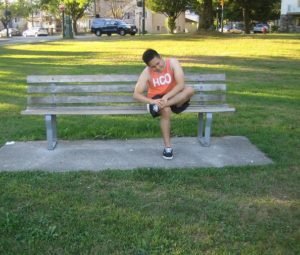Plantar fasciosis is characterized as pain that originates from the thick tissue bands or plantar fascia that radiates from the base of the heel bone up to the bottom of the toes. Remember that in this condition, the fascia is repeatedly stressed or strained rather than inflamed.
This condition can develop among individuals who have a sedentary lifestyle, have unusually high or low foot arches, wearing high-heeled shoes, tight calf muscles or taut Achilles tendon. Those who have a sedentary lifestyle are affected once they abruptly increase their activity level or use less supportive shoes.
Plantar fasciosis is also common among runners and dancers due to the heightened strain on the fascia especially if the individual has poor foot posture. The development of this painful condition develops more often among those who have occupations that involve standing or walking on hard surfaces for extended periods.
What are the indications of plantar fasciosis?
An individual with plantar fasciosis might experience pain on any part of the plantar fascia but usually on the area where the fascia links with the base of the heel bone. An individual often suffers from significant pain during weight bearing especially when placing weight on the foot first thing in the morning.

The pain is reduced momentarily within 5-10 minutes but might return later in the day. It is often worse when pushing off the heel and after periods of rest. In such instances, the pain radiates from the base of the heel up to the toes. Some experience burning pain throughout the interior border of the sole while walking.
Management
The ideal way to alleviate the stress and pain on the fascia is to instruct the individual to take short steps and avoid walking barefoot. Certain activities that involve foot impact such as jogging must be avoided. The individual might be required to lose weight. The stretching of the calf muscles and foot often helps hasten the healing process. In addition, the use of orthotics help cushion, support and elevate the heel.
Physical therapy and night time splinting can help stretch out the calf muscles and fascia during rest. Other measures that can be used include adhesive strapping or using arch-supportive wraps, cold massage, non-steroidal anti-inflammatory drugs (NSAIDs) and corticosteroid injections.
If these measures are not effective, oral corticosteroids are given and a cast is applied. In case the symptoms persist, surgery might be required to partially release pressure from the fascia and eliminate heel spurs if they are adding up to the pain.
